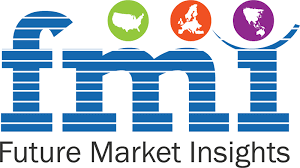The global signage market is on a trajectory to experience a remarkable Compound Annual Growth Rate (CAGR) of 6.3% from 2022 to 2032. This growth is expected to culminate in a total market valuation of US$ 63.3 billion by the year 2031.
Over the past decade, the advertising industry has experienced a significant shift towards digital advertising methods in various regions. This transition can be largely attributed to the growth of the retail sector, intensifying competition among brands. In the United States, for example, the retail industry’s significant growth, with total sales estimated at US$ 1,477 billion for the fourth quarter of 2020, has driven the need for more comprehensive product information, fueling the demand for short-term promotional signage, especially during seasonal product launches. Additionally, the increasing adoption of advanced technologies, such as interactive digital signage, offers lucrative opportunities for the digital signage market in the U.S., providing cost-effective marketing solutions and dynamic content customization.
China is emerging as one of the fastest-growing printing markets in the Asia-Pacific region, with a particular focus on publication printing, digital printing, package printing, and green printing. Large printing companies are heavily investing in the signage industry, particularly for corporate marketing and retail, emphasizing the need for well-equipped printers. In the UK, digital signages have replaced conventional ones, serving as a cost-effective and engaging media tool for multiple sectors like education, healthcare, hospitality, transportation, and retail.
India’s road network expansion has been substantial, and the demand for directional and wayfinding signages has risen in response to increased infrastructure development and automobile sales. Japanese electronics manufacturers are capitalizing on the growing demand for digital signages, providing an alternative revenue stream, and shifting their focus from the declining television market. The high demand for LCD panels and the user-friendly features of digital signages are influencing brand decisions, enabling the display of various pre-programmed content formats such as audio, video, and images.
Get our Sample Report to discover how recent industry developments, like: https://www.futuremarketinsights.com/reports/sample/rep-gb-13113
Key Takeaways of Signage Market Study
- Rising at 6.4% CAGR between 2021 and 2031, signage market will grow in response to expansion of the retail sector
- Presence of a high number of supermarkets and hypermarket makes the U.S. dominant. It is expected to account for over 85% of sales in North America
- Focus on outdoor digital advertising will drive the U.K. market at 2% y-o-y growth in 2021
- Expansion of the retail sector will position India as a key market for signage sales within South Asia
- China’s bustling retail sector will catapult it as a chief signage market within East Asia
The Restraints To Signage Market
The signage market, while experiencing significant growth, is not without its challenges and restraints. These factors can impede the market’s progress and include:
- Regulatory Compliance: Compliance with regional and industry-specific regulations and standards for signage can be complex and costly, impacting market accessibility.
- Technological Disruptions: Rapid advancements in technology can render existing signage solutions obsolete, necessitating continuous innovation and investment.
- Environmental Impact: The production and disposal of signage materials can have an environmental footprint, contributing to sustainability concerns.
- Economic Uncertainty: Economic fluctuations and recessions can lead to reduced business investments in signage, affecting market growth.
- Competition: A saturated market with numerous players can intensify competition, potentially squeezing profit margins.
- Customization Complexity: Meeting diverse customer demands for customized signage solutions can be challenging in terms of time, cost, and resources.
- Installation and Maintenance Costs: The expenses associated with installing and maintaining signage systems can be a deterrent for some businesses.
- Digital Transformation: While digital signage is on the rise, transitioning from traditional to digital signage can be costly and time-consuming for some businesses.
Who is Winning?
- FASTSIGNS International. Inc.,
- Signarama,
- Walton Signage Corporation,
- R.R. Donnelley & Sons Company,
- Impact Signs Inc.,
- Back Bay Sign Company,
- Pearce Signs Group,
- Sovereign Signs (Strata Holdings Limited),
- HNS Signs Ltd,
- Allsigns International Ltd,
- Harrisons Signs Limited,
- Benson Signs Ltd.,
- Lavastar Signs Ltd,
- National Signs Ltd,
- Signs Express Ltd,
- Dlinexsign Ltd and
- One Digital Signage Ltd.
Competitive Landscape
Companies operating in the signage market are a part of highly fragmented market landscape where multiple domestic players exist in the market. Rising demand for marketing solutions with technological advancement across the emerging economies has led to business expansion. Improvised product development and advanced display technologies are commonly adopted strategies by the players in the signage market.
The companies are inclined towards providing green solutions to their customers.
- Signs Express Ltd offers an environmental advantage to its customers by switching to 100% recyclable PVC-free polypropylene board for all temporary construction site signs.
The Evolution of Signage: From Traditional to Digital
Signage has come a long way from its traditional roots. While classic options like banners, billboards, and posters still hold their charm, the advent of digital signage has added a new dimension to the market. Digital displays, interactive kiosks, and LED signs provide businesses with dynamic platforms to engage their audience in real-time.
“Marketers are keenly focusing on investing on advertisement to grab customers’ attention which is a challenging task. Digital signage have the potential to overcome the challenges associated with conventional advertising. A major trend observed recently is replacement of conventional signage with digital signage at multiple locations.” says an FMI analyst.
The Importance of Signage for Businesses
Signage plays a crucial role in the success of businesses across industries. Here’s why effective signage is essential:
- Enhanced Brand Visibility: Well-designed signage with the company’s logo and brand elements helps increase brand recall and visibility among the target audience.
- Improved Wayfinding: Signage with clear directions and information aids visitors in navigating complex spaces, improving their overall experience.
- Increased Footfall: Eye-catching outdoor signage can attract potential customers, leading to increased foot traffic and potential sales.
- Cost-Effective Advertising: Signage serves as a cost-effective advertising medium, promoting products and services 24/7.
- Differentiation: Unique and creative signage sets businesses apart from competitors, leaving a lasting impression on customers.
Market Drivers-
- Advertising and Branding: Signage is a critical tool for advertising and branding, providing businesses with a means to attract customers and communicate their brand identity.
- Information Dissemination: Signage serves as an effective medium for conveying information, whether it’s directional signs in public spaces, safety signs in workplaces, or informational signs in retail environments.
- Digital Signage: The rise of digital signage, which offers dynamic content, real-time updates, and interactivity, is driving innovation and increasing the demand for signage solutions.
- Retail Industry Growth: The retail sector relies heavily on signage for in-store promotions, visual merchandising, and wayfinding, contributing to the demand for diverse signage types.
- Outdoor Advertising: Outdoor signage, including billboards, transit advertising, and banners, continues to play a crucial role in the advertising and marketing strategies of businesses.
- Events and Experiential Marketing: Signage is an integral part of events and experiential marketing, creating immersive and interactive experiences for attendees and participants.
- Health and Safety Compliance: Safety signs, including those related to social distancing, fire safety, and emergency exits, are essential for regulatory compliance in various industries.
- Government Initiatives: Government projects and infrastructure development require signage for traffic management, public information, and urban planning.
- Wayfinding and Navigation: In public spaces such as airports, malls, and hospitals, signage helps people navigate complex environments efficiently.
Ready to Learn About Our Approach? Explore Our Methodology: https://www.futuremarketinsights.com/request-report-methodology/rep-gb-13113
Key Segments Covered In Signage Industry Research
Product Type:
- In-store Signage
- Promotional Signage
- Directional Signage
- Outdoor Signage
- Promotional Signage
- Directional Signage
End-use:
- Supermarkets & Hypermarkets
- Stores
- Schools & Offices
- Industrial Sectors
- Entertainment
- Others
Frequently Asked Questions (FAQs)
- What will be the growth of Signage Market in the coming years?
- Who are the key players in the Signage Market?
- What will be the size of Signage Market in the foreseeable future?
- Which end-use type is expected to register significant growth in the Signage Market?
- Which region accounted for the largest share in the Signage Market?
- Who are the target audience in the Signage Market?
About Future Market Insights (FMI)
Future Market Insights, Inc. (ESOMAR certified, recipient of the Stevie Award, and a member of the Greater New York Chamber of Commerce) offers profound insights into the driving factors that are boosting demand in the market. FMI stands as the leading global provider of market intelligence, advisory services, consulting, and events for the Packaging, Food and Beverage, Consumer, Technology, Healthcare, Industrial, and Chemicals markets. With a vast team of over 5000 analysts worldwide, FMI provides global, regional, and local expertise on diverse domains and industry trends across more than 110 countries.
Contact Us:
Future Market Insights Inc.
Christiana Corporate, 200 Continental Drive,
Suite 401, Newark, Delaware – 19713, USA
T: +1-845-579-5705
For Sales Enquiries: sales@futuremarketinsights.com
Website: https://www.futuremarketinsights.com
LinkedIn| Twitter| Blogs | YouTube


